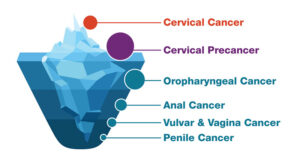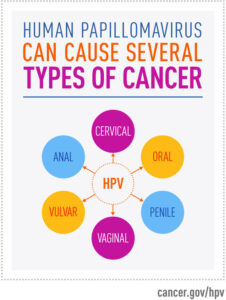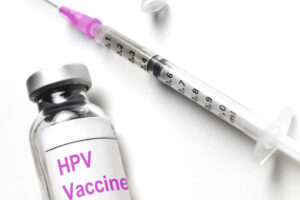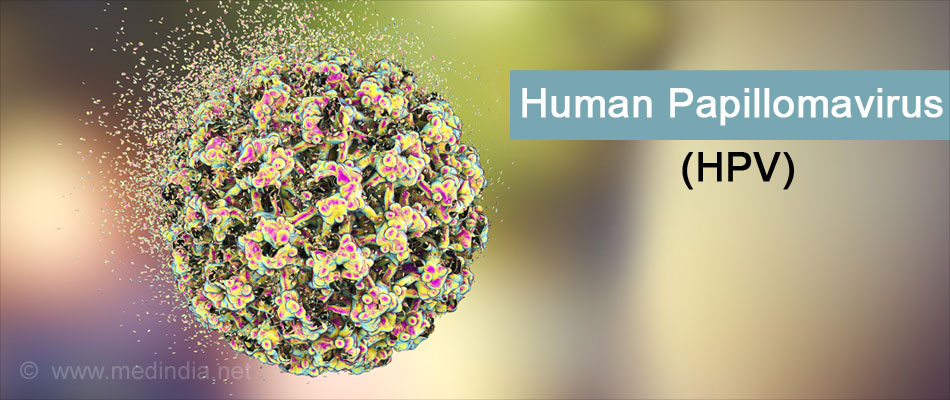• Human papilloma virus (HPV) is the most common sexually transmitted infection in the world. With more than 10 million cases in India, EVERY YEAR.
• 80% people will have at least one type of HPV at some point in their life.
• Nearly all cases of cervical cancer are caused by HPV.
Human papilloma virus (HPV) is the name of a very common group of viruses. There are more than 100 different types of HPV. The viral infection mostly causes warts and some cause different types of cancers. There’s no cure for the virus itself. There are vaccines available that will help you protect from getting certain types of HPV. In most cases, your body’s immune system defeats an HPV infection before it creates warts. When warts do appear, they vary in appearance depending on which kind of HPV is involved. Two types of HPV (types 6 and 11) cause most cases of genital warts. Warts are no fun, but they’re considered low-risk HPV because they don’t lead to cancer or other serious health problems.
In most cases, your body’s immune system defeats an HPV infection before it creates warts. When warts do appear, they vary in appearance depending on which kind of HPV is involved. Two types of HPV (types 6 and 11) cause most cases of genital warts. Warts are no fun, but they’re considered low-risk HPV because they don’t lead to cancer or other serious health problems.
At least a dozen types of HPV can sometimes lead to cancer, though two in particular (types 16 and 18) lead to the majority of cancer cases. These are called high-risk HPV. Cervical cancer is most commonly linked to HPV, but HPV can also cause cancer in your vulva, vagina, penis, anus, mouth, and throat.
 The route of HPV transmission is primarily through skin-to-skin or skin-to-mucosa contact. Sexual transmission is the most documented, but there have been studies suggesting non-sexual courses. A study states that the clinical presentation of symptoms is approximately 11-12 months among males and 5-6 months among females. Cervical HPV in 9.4 months and genital HPV in men 7.5 months. Warts develop in ~6-10 months after initial infection. The process of cancer development from HPV infection takes ~5-10 years minimum and 20-25 years on average.
The route of HPV transmission is primarily through skin-to-skin or skin-to-mucosa contact. Sexual transmission is the most documented, but there have been studies suggesting non-sexual courses. A study states that the clinical presentation of symptoms is approximately 11-12 months among males and 5-6 months among females. Cervical HPV in 9.4 months and genital HPV in men 7.5 months. Warts develop in ~6-10 months after initial infection. The process of cancer development from HPV infection takes ~5-10 years minimum and 20-25 years on average.
Not everyone is at an equal risk of developing the HPV infection. One who has multiple sexual partners; Beginning of sexual activity in the adolescence; Cigarette smoking: HPV infection is a decisive component for cervical malignancy, but cigarette smoking is a co-factor (immunosuppressive effects); Oral HPV type 16 has a higher prevalence (2%) in tobacco users; Sexually transmitted disease, lack or delayed treatment of the same.
Your doctor, maybe able to examine the warts and make a diagnosis, but if there are no visible warts, there are methods like vinegar (acetic acid solution) test, pap test and DNA test. Biopsy maybe advised to make a confirmatory diagnosis.
Medications to eliminate warts are typically applied directly to the lesion and usually take many applications before they’re successful. If medications fail, there are surgical methods to remove warts.
The best way, to save yourself from HPV would be to limit your sexual partners, maintain proper hygiene and make a habit of having routine visits to your doctor and get yourself checked. Vaccines are available for different types of HPV.  Remember, early detection of any infection or even cancer, could be lifesaving.
Remember, early detection of any infection or even cancer, could be lifesaving.
-STAY HEALTHY
Dr. Aishwarya Nair









